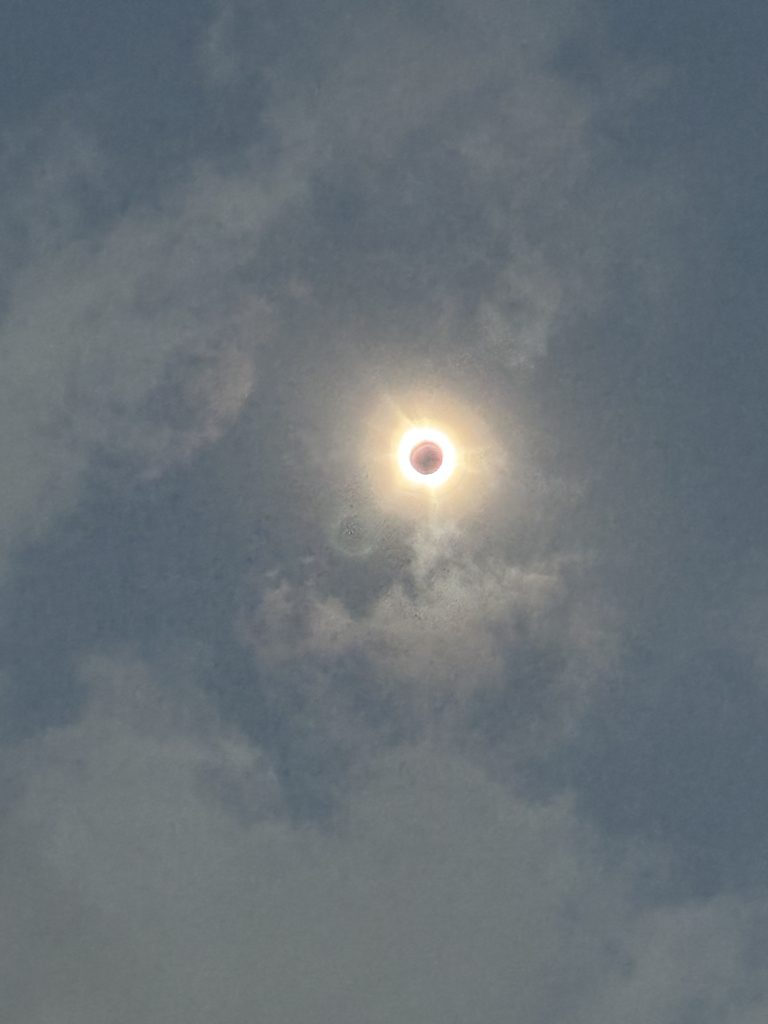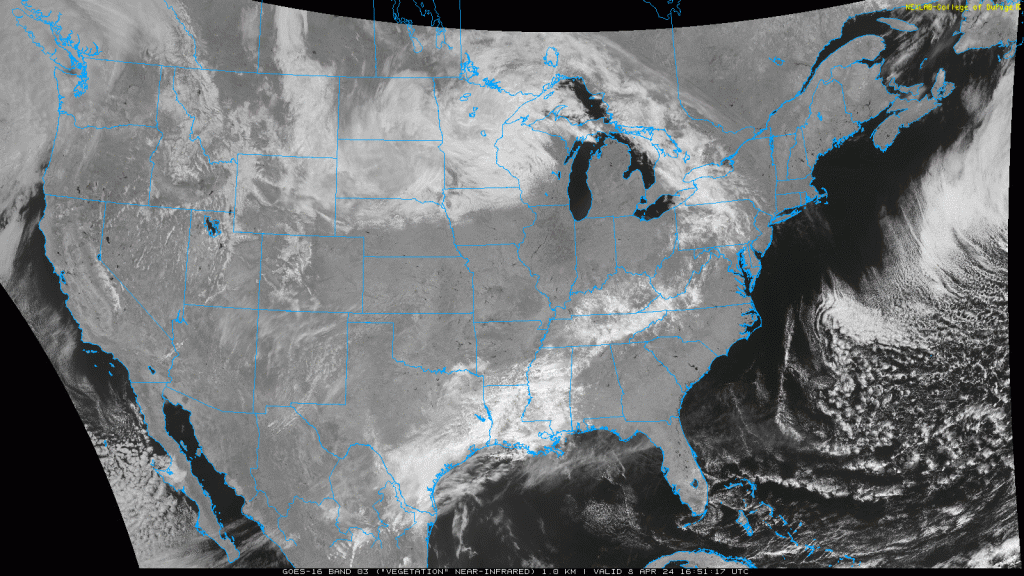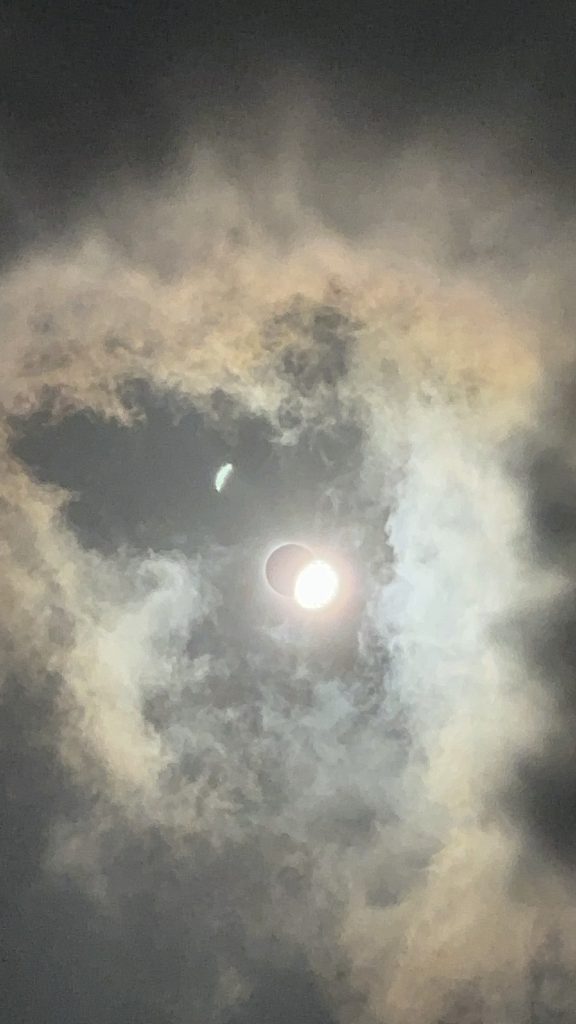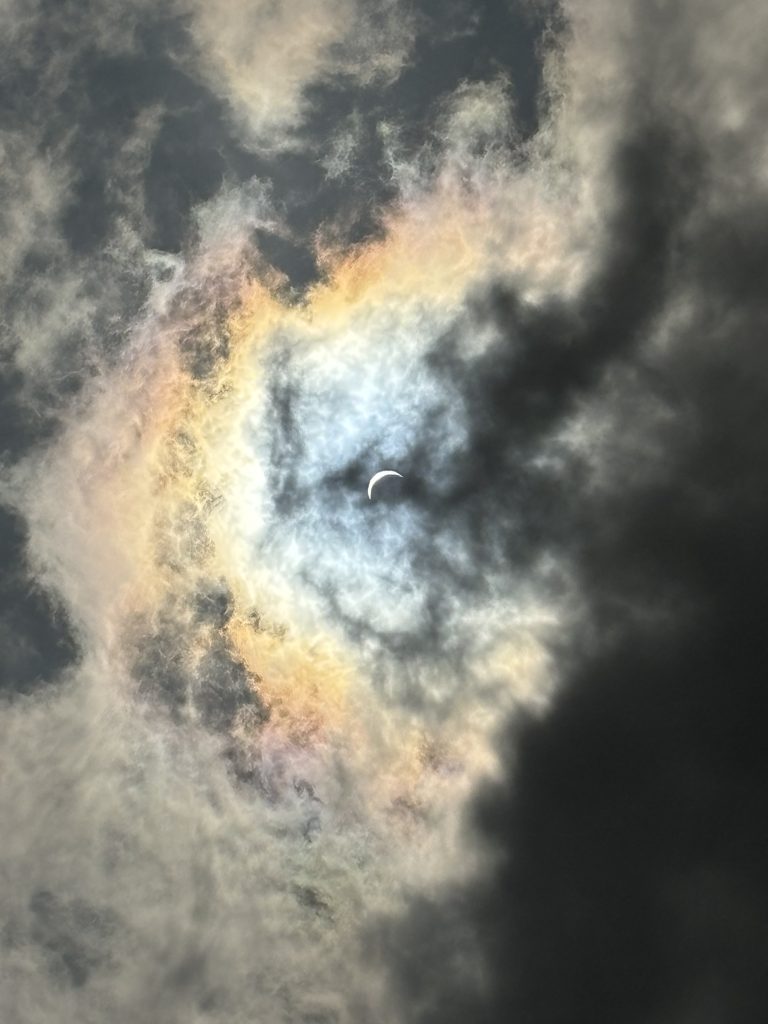On April 8, 2024, an extraordinary astronomical phenomenon unfolded across the skies of North America: a total solar eclipse. This rare celestial event, characterized by the precise alignment of the Moon, Sun, and Earth, captivated millions with its ethereal display.
A total solar eclipse manifests when the Moon meticulously interposes itself between the Earth and the Sun, completely obstructing the solar disc. As the Moon’s shadow traversed the terrestrial landscape, individuals fortunate enough to reside within the path of totality were privy to a mesmerizing spectacle [Fig. 1]. The diurnal ambiance transitioned into a crepuscular state, evoking a subdued atmosphere of anticipation. Avian behavior was notably influenced, with birds exhibiting twilight-like chirping patterns.

Commencing its celestial odyssey from the Pacific coast of Mexico, the eclipse traversed a sweeping trajectory across North America. En route, it made landfall in Texas before progressing through Oklahoma, Arkansas, Missouri, Illinois, Kentucky, Indiana, Ohio, Pennsylvania, New York, Vermont, New Hampshire, and Maine. Even marginal regions of Tennessee and Michigan were graced by its presence. Canada, too, partook in this cosmic choreography, as the eclipse traversed Southern Ontario, Quebec, New Brunswick, Prince Edward Island, and Nova Scotia, culminating its journey along the Atlantic coast of Newfoundland [Fig. 2].

For spectators ensconced within the path of totality, the eclipse epitomized a profound communion with the cosmos. The solar corona, typically obscured by the Sun’s luminosity, was unveiled in its resplendent glory, enveloping the lunar silhouette with an entrancing aureole of light. This breathtaking panorama underscored the immensity and splendor of the universe [Fig. 3].

Beyond its visual allure, the eclipse engendered repercussions extending into meteorological realms. Leveraging NOAA’s High-Resolution Rapid Refresh (HRRR) model, traditionally utilized for meteorological prognostication, analysts discerned the eclipse’s influence on incident solar irradiance. This analytical framework delineated how the lunar transit precipitated alterations in terrestrial heating patterns and, concomitantly, atmospheric conditions. Such analyses underscored the symbiotic relationship between celestial occurrences and terrestrial phenomena.
Looking forward, the eclipse serves as a poignant reminder of the ephemeral nature of cosmic phenomena. While the subsequent total solar eclipse over the United States is not slated until August 2045, the legacy of April 8, 2024, will endure as a testament to the magnificence and enigma of the cosmos. As humanity navigates its trajectory through the cosmos, let us cherish these transient moments of celestial grandeur, for they serve as poignant reminders of our infinitesimal yet interconnected existence within the cosmic tapestry [Fig. 4].

